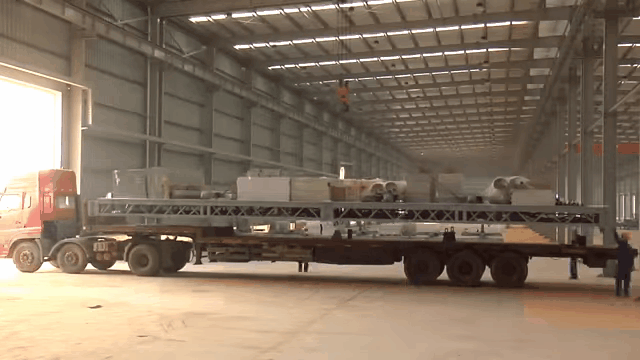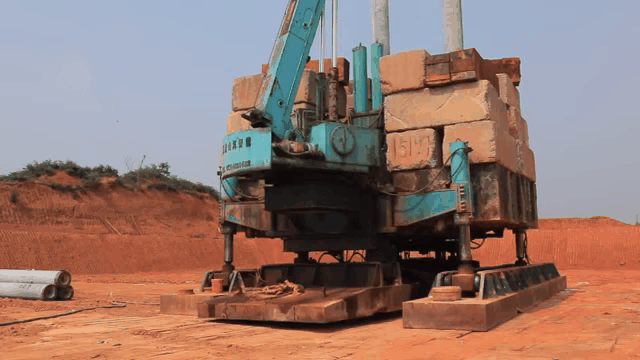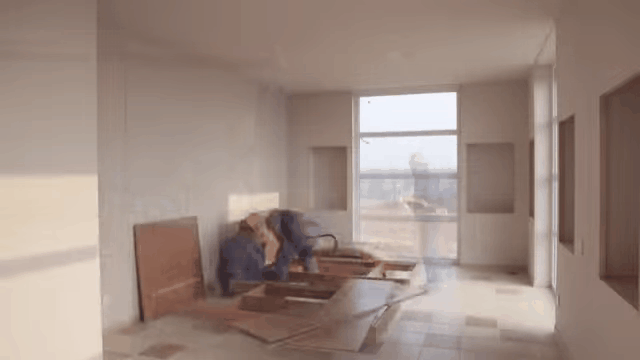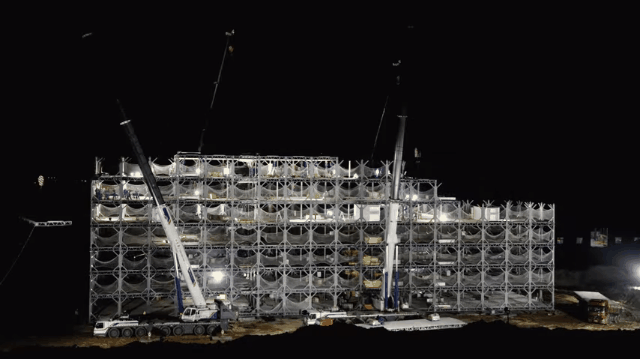The pop-up city is an idea that dug its way into our collective brain a century ago as the first steel buildings rose — a dream that’s as common in cartoons as it is in urban planning. And for the first time in history, it’s technically possible.
In China, a company called Broad Sustainable Building Co has pioneered the rapid construction of skyscrapers. Rapid doesn’t quite cut it: Broad recently uploaded a video of a 57-storey tower that the company completed in just 19 days — at a pace of three floors per day. The company achieves this unthinkable pace through extraordinarily precise logistics and prefabrication.
It’s as close to an instant skyscraper as we’ve ever gotten, period. It’s also fraught with unanswered questions and untested assumptions, and it should make us think long and hard about what we want from city life.
The Building Factory
Some of the experts I asked about Broad Group told me that they didn’t know enough about the process to comment — which reflects the fact that in some ways, Broad is working outside the traditional building industry. Each building is built more like a high-tech product than an architectural construction.
Broad buildings are born on a factory floor. Their floors, ceilings, and walls are assembled almost entirely inside its warehouses, right down to floor tiles, plumbing, electrical wiring and air conditioning vents that are normally installed while a building is under construction. These components are stacked and loaded onto trucks, which transport them to the site.

The only work done in the field is lifting the floors into place and bolting them together. Construction crews prepare the building site by laying the foundation incredibly fast. “No sawing or welding is required,” says the company, “reducing the time spent, and noise and traffic disruption to neighbouring communities.”
Back in 2013, Broad Group announced plans for a project called Sky City: The world’s tallest building, built entirely out of prefab modules, at a rate of five storeys per day. Many engineers questioned whether these modules were structurally sound at 600m up. In other prefab projects, the lack of traditional structural cores have made wind and other lateral forces big problems.
Other claimed that it would be a “death trap” in an emergency. “With so many people living and working in the building, there will be risks everywhere,” said Li Xun, vice-president of the China Academy of Urban Planning and Design — to China Daily. “What if there is a fire, or an elderly man has a heart attack?”
Two years later, Sky City still isn’t a reality, but it’s not because of a heart attack of earthquake risk. The company has been delayed, instead, by what it described to The New York Times as a government slow-down after all the negative media attention.

While prefabricated buildings date back a full century, Broad goes far beyond what you and I might think of as prefab. Videos of the process show workers not only installing the flooring and walls, but also assembling the beds, dressers, and curtains. Finally, they add sheets and artfully arrange a throw over the end of the mattress. An instant hotel. In hours.
Broad says that its buildings will last for 600 years, assuming they’re inspected every 60.

In theory, you could also pull them down as fast as you put them up. Broad’s system would make it possible to build and disassemble whole cities in a matter of years. It sounds hyperbolic, because that seed of an idea has been bopping around sci-fi and architecture circles for decades, as we imagine a distant future where cities pop up and fold down as demand, economics, and even the weather change. When buildings are bolted together in days, cities that rise and fall in months are within reach.
There’s no relevant environmental impact study for the kind of buildings Broad makes. It’s almost impossible to weigh the value of a relocatable city against the potential problems it would create. It’s simply terra incognita.
99.9 Per cent Pure
Broad’s chairman, Zhang Yue, swore off his previous life as a private jet-owning businessman who built a replica of Versailles to focus on innovating sustainable building construction. He advocates for better insulation, energy conservation, and triple-paned windows.
In one pamphlet about the company philosophy, Broad espouses the virtues of a low-carbon life, including home-made clothing (“knitting is economical and stylish”) alongside government-mandated population control (the “one child policy makes the Mother Earth happy”). The Broad building system, likewise, reduces construction waste and even creates a tighter seal on exterior walls, keeping air pure.

Defence against pollution is a common theme. The company notes that the air is “99.9% pure” inside its latest tower. TreeHugger’s Lloyd Alter, who visited Broad’s headquarters and factory as a guest, stayed at the hotel built on site in 2013. “[A] sign notes that it is there to keep the polluted exterior air outside,” Alter wrote. “There is what once was an opening hopper window, now sealed with a sticker saying that the air inside is 100 times cleaner than the outside air.”

Alter points out that the newer models of Broad buildings have flat facades instead of protruding mullions, or window frames, since that makes them easier to clean. “You need to clean the windows a lot here due to the air pollution and the smooth, flat facade is a lot easer to deal with,” he explains.
This is architecture for a world where severe pollution is terrible and unchanging, a reality that cities all over the world are increasingly confronting. If Broad’s buildings are built like machines on an assembly line, they’re designed more like bunkers — ones that can filter almost anything out from the world outside.
Anything You Need, From Cradle To Grave
In 2013, Zhang Yue wrote a public response to the critics who questioned whether Sky City really would be environmentally sound. Yue painted a picture of his buildings as ecosystems that will contain entire healthy communities. “In Sky City, you can find anything you need from cradle to grave, except a crematorium,” he wrote. “I hope this striking feature can awaken those who have turned the liveable cities into vehicle-dependent cities.”
In the same essay, he describes how Broad’s buildings create spaces that are so small that they can only be sold to middle- and lower-class buyers in the suburbs:
[W]e have never intended to sell at high prices. In addition, it is built at the suburbs. The location also decides that it is impossible to sell at high prices. The Sky City is built to solve the housing issue of the masses.
If all this language sounds familiar, it’s because it’s a common tale in countries with booming cities. For example, in New York in the early 20th century, tenements and slums where poor urban immigrants lived were razed in favour of (often prefabricated) towers, leaving open space for recreation and leisure at their bases.
Chinese cities are going through their own growing pains, with newly-arrived urban immigrants going to extreme lengths to find liveable (and affordable) housing in urban centres. Could a suburban satellite community of Broad-built skyscrapers ease the situation? In other cities, the “tower in the park” solution has been plagued with problems, from segregating the poor to severe structural decay and maintenance problems. Sectioning off entire demographics, no matter how well-intentioned, has never been good for cities or their inhabitants.
So are Broad’s buildings deeply cynical or wildly progressive? It’s hard to tell whether this is architecture for utopia or dystopia. Maybe because it could go either way: The buildings serve as a manifesto for architecture that leaves a lighter, cheaper footprint — or they are a Machiavellian guide to further segregating and dehumanising life in cities to maintain social control. It will depend on how Broad uses and sells its technology — and in the end, it will probably be a bit of both.
